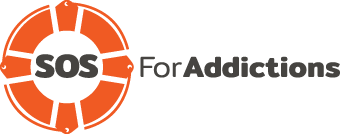Problem Gambling Resources (NEW)
1-800-Gambler
Hotline staff will send you more information about problem gambling or make a referral to the closest problem gambling counselor or Gamblers Anonymous meeting.
Kentucky Council on Problem Gambling
Learn about gambling addiction, determine whether you or someone you know may have a gambling problem, and obtain referral information for assistance with problem gambling. Click here to visit https://www.kycpg.org/.
Kentucky Gambling Help
Take a self-assessment to learn about your risk of problem gambling and find a link to access a trained counselor via online chat. Click here to visit https://kygamblinghelp.org/.
Gamblers Anonymous (GA)
To find a GA meeting near you, visit https://gamblersanonymous.org/find-a-meeting/.
Other Resources/Frequently Asked Questions
What are some common symptoms of drug abuse or addiction?
Depending on the drug being abused, symptoms can vary greatly. For example, an individual abusing heroin might exhibit addiction signs such as needle marks and bruising, skin abscesses and infections or collapsed veins from repeated injections. Other drugs might cause an abuser to experience depression, lack of interest in usual activities, or erratic or violent behavior. For more information about the symptoms of drug abuse or addiction, click here.
What kinds of treatment options are available?
The purpose of treatment for drug abuse is to help an individual stop using the drug and to engage in a healthy and active lifestyle. Keeping patients in treatment throughout the entirety of a program is crucial because recovery doesn’t happen overnight. These factors mean that finding the right treatment for an individual’s specific needs is very important. Treatment options depend largely on the extent of a person’s addiction and the degree of support the person has. For information about different types of treatments available, click here.
What is a needle exchange program?
Needle Exchange Programs are programs designed to provide an outlet for the safe disposal of needles for injection drug users. At these sites, users can be tested for blood borne viral infections and obtain clean needles in order to decrease the possibility of infection from shared needles. These programs help users to connect with treatment options and social services that may have been unfamiliar or unavailable to them otherwise. In addition, needle exchange programs serve as a resource for loved ones of those struggling with addiction. For more information about needle exchange programs and where to find them, click here.
How does intravenous drug use contribute to HIV, AIDS and viral hepatitis circulation?
It’s the unfortunate reality that individuals who struggle with substance abuse are at greater risk of contracting or transmitting HIV, AIDS and hepatitis. Injection drug use and needle-sharing are often responsible for these types of transmissions, and they make up for as many as 10% of HIV cases each year. In fact, nearly 1 in 6 individuals with HIV have used an illegal intravenous drug. For more information about intravenous drug use and HIV, AIDS and viral hepatitis, click here.
What is Medication-Assisted Treatment?
Medication-Assisted Treatment is the use of medications alongside counseling and behavioral therapy as part of a holistic approach to the treatment of substance abuse. Medication is primarily used when an individual’s addiction involves opioids like heroin and some prescription pain relievers. Medication-Assisted Treatment is designed to normalize brain chemistry, block the euphoric effects of alcohol and opioids, decrease cravings, and regulate body functions. For more information about medication-assisted treatment, click here.
What is naloxone, when is it used and where can it be obtained?
Naloxone is a medication specifically designed to quickly protect an individual in the event of an opioid overdose. The chemicals in naloxone bind to opioid receptors, thereby reversing the effects of the opioids themselves. Because of this chemical reaction, naloxone has the ability to restore regular respiration to an individual whose breathing has slowed or stopped as a result of opioid overdose. For more information about naloxone, click here.
